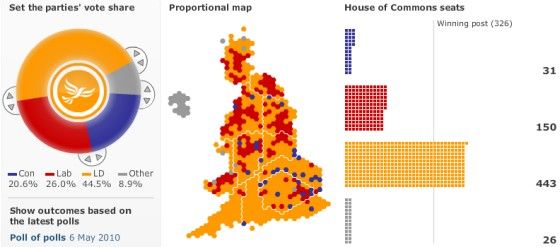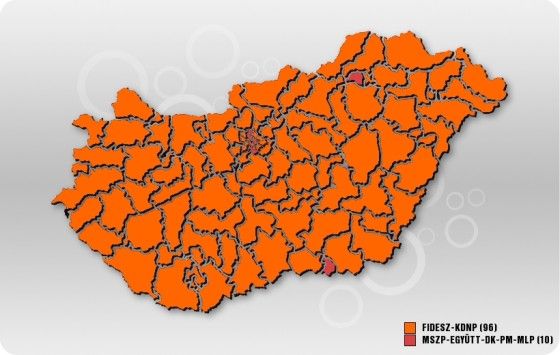Három ország szembeszállt az Európai Unióval: Orbán Viktor fontos szövetségeseket szerzett

A múlt heti uniós csúcs komoly eredményeket hozott Magyarországnak. A szuverenista erők már nincsenek egyedül az Európai Unióban.

The victory of the governing parties in Hungary raised reasonable questions about the fairness of the electoral law. So I looked at other systems and tried to calculate what outcome would such results produce in other countries.
A hot topic in Hungary right now is how much the new electoral law has affected the new parliament's seating and whether it is fair. One of our readers, Attila Hajdú, gave me the idea of plugging the results of Hungary's parliamentary elections into the electoral systems of other countries to see the outcome.
In countries with a strictly proportional electoral system, where people vote only on party lists (like in Israel, the Netherlands or Slovakia), it's pretty simple: Fidesz-KDNP's 44.54 percent of the vote would give them, more or less, the same share of seats (a bit more because of the votes cast on lists that failed to meet the 5 percent threshold), so they wouldn't get a majority on their own.

Countries with a non-proportional electoral system are much more exciting. First of all, let's look at the UK, where the BBC's calculator gives us a perfect tool for such an experiment. I've chosen the LibDem's to be Fidesz because of the matching colours. MSZP and its allies got Labour, and – only for technical reasons – Jobbik got to be the Conservatives in this model (I also tried it with Fidesz as Labour, and the results were pretty much the same but with an even higher majority). The outcome looked quite impressive:

It's such a stable supermajority, that maybe it could even convince journalists from Great Britain who seem to be worried about the Hungarian electoral system's bias. And it's a model based on the regional specialities of the UK. If we simply apply the UK's system in Hungary, so we keep only the constituencies and get rid of the party lists, the outcome would be even more lopsided, with 96 seats for Fidesz (for 44.54 percent), 10 for MSZP (for 25.99 percent), 0 for Jobbik (20.54 percent) and LMP (5.26 percent):

I couldn't find such a well-visualized calculator for other countries, but in Germany the Greens had an application for last year's elections.
The outcome looked like this (it's not that fancy, as I told you):

Out of 645 seats, Fidesz-KDNP would get 298, MSZP and its allies 174, Jobbik 137, LMP 36. The German electoral system would give Fidesz-KDNP 46.2 percent of the seats for the 44.5 percent of the vote, so it's not even enough for a simple majority.
Unfortunately I couldn't find such calculators for France or Italy, and I was really surprised that I couldn't find any for the U.S. House and Senate elections either. In case someone can help me out with such applications, let me know in a comment, I'd love to run a calculation for these countries as well.